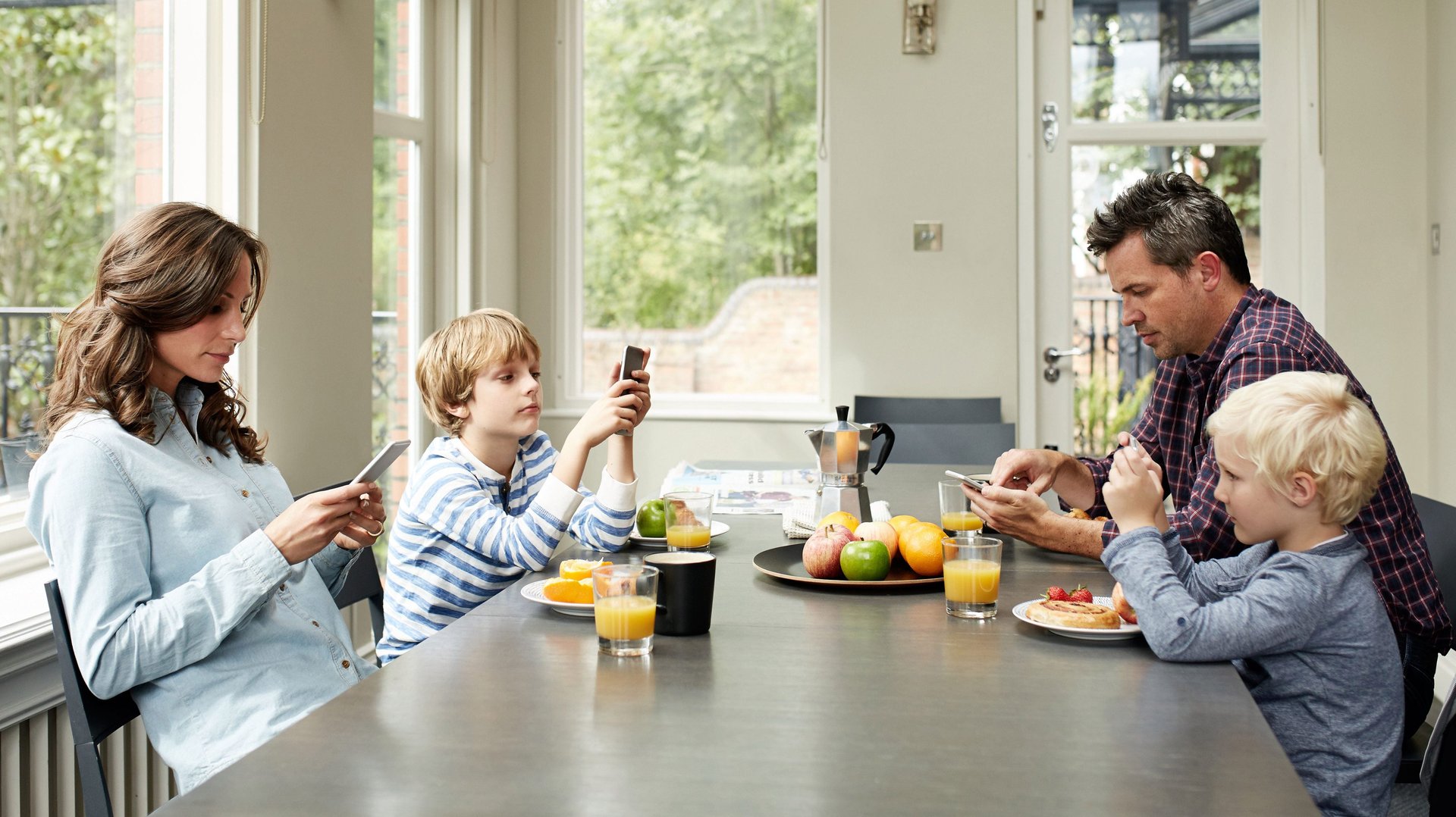In the age of screens, families are spending more time “alone-together”
We fret a lot about what smartphones are doing to kids (and, let’s be honest, parents). A pair of researchers asked a different question: how are the devices changing the time families spend together?


We fret a lot about what smartphones are doing to kids (and, let’s be honest, parents). A pair of researchers asked a different question: how are the devices changing the time families spend together?
Turns out, families are spending more time together than before. But not together-together. Alone-together.
Killian Mullan from Oxford University and Stella Chatzitheochari from the University of Warwick looked at time-use data from a nationally representative UK sample of around 5,000 children and their parents.
They found that between 2000 and 2015, parents with kids aged 8-16 spent 9% more time together: 379 minutes per day in 2015, versus 347 minutes per day in 2000. The families also spent roughly the same amount of time on “shared activities,” like eating meals and watching TV.
But the biggest change was the rise in “alone-together” time—that is, in the same house but not in the presence of one another. So called alone-together time jumped by 43% over the period of study, to 136 minutes per day in 2015.
“For all of the the additional time they were together, children said they were alone,” Mullan said.
A lot of this alone-together time is taken up by tech, the researchers found. They did not have data for 2000, but in 2015, children and parents used mobile devices for:
- 38% of total family time
- 47% of alone-together time
- 27% of shared activity time
“There’s definitely evidence that the use of devices goes along with time on your own,” Mullan said.
He undertook the research with Chatzitheochari because he was perplexed by the popular narrative that devices were diminishing the quantity and quality of relationships. The data confirmed that devices are creeping into shared activities, but not exactly taking over.
For example, kids reported checking their phones for 1.5 minutes during meals (which usually last for about 20 minutes). Adults reported checking their devices for twice the time as kids, suggesting that parents should perhaps focus more on their own tech use. The same pattern holds when watching TV together: kids checked devices for about five out of the 30 minutes they were watching, while parents spent seven minutes on their phones during the same period.
Distracted by devices?
The data alone do not explain whether time together is compromised by devices. Sherry Turkle, a professor at MIT coined the term “alone together” to label our heightened disconnection, which she said has resulted in kids not knowing how to empathize with each other or communicate effectively. “Across generations, technology is implicated in this assault on empathy,” she wrote in the New York Times. “We’ve gotten used to being connected all the time, but we have found ways around conversation—at least from conversation that is open-ended and spontaneous, in which we play with ideas and allow ourselves to be fully present and vulnerable.”
Mullan and Chatzitheochari’s study, published in the Journal of Marriage and Family, acknowledges this. “While we did not find any significant changes in the time family members spend interacting and doing things together,” Chatzitheochari said in a statement, “it is certainly possible that mobile devices distract people’s attention during family activities, leading to feelings that the quality of family relationships is under threat.”
Mullan said the findings surprised him. “The perception that it’s all of the time, that the use of devices has taken over shared shared activities—we can show that it’s not that much time,” he said. “But that doesn’t mean it’s not important or not experienced as problematic.” Even if the moments spent staring at a screen are short, the impact of these interruptions could be huge (especially if it sparks a fight, which it often does).
The research invites another question—if families are spending time together at home, what’s falling? “It seems over time there’s more of a move to carving out that time in the home at the expense of spending time outside the home,” he said.
More parents are worried about safety, and a decade of austerity has meant cuts to the kinds of public places kids might go together (libraries, parks, and the like). “Spaces where kids can be together safely are becoming fewer and fewer,” Mullan said.
He said he’s most curious about the context behind the data: are kids at home (alone or alone-together with their family) because there is nowhere to go? Because they are not allowed? Or because the lure of technology is too great? We used to think of “home alone” as akin to the Macaulay Culkin film—kids left unsupervised. Now, we have evidence that even when they are among family, they still feel alone.